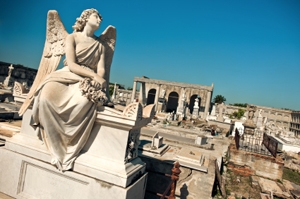 Why do humans have such a strong desire to erect memorials? What deep-seated drive impels us to build monuments? The answer can be found in the definition of the word "monument.” The Latin root is the word "monere” which means, "to remind.”
Why do humans have such a strong desire to erect memorials? What deep-seated drive impels us to build monuments? The answer can be found in the definition of the word "monument.” The Latin root is the word "monere” which means, "to remind.”
As one stonemason from England carved, "Memorial art should speak to us across centuries; it is the means by which we break bread with the dead”. Men have built monuments in various forms for thousands of years for one basic reason―they want to remind present and future generations of people who have passed from life.
A monument, great or small, is the act of a person perpetuating the memory of loved ones who precede them in death. Memorials often reflect positive aspects of the loved ones’ life and promote healing from the grief that family and friends suffer. It can be said that monuments are not actually for the dead but serve a meaningful purpose for the living!
With time cemeteries become repositories of local memories, museums of art and records of changing social patterns. They represent stability and continuity at the center of a community.
What is a Monument?
A monument is far more than a means of marking
the resting place of an individual or a family.
It is a symbol of devotion. It is a tangible expression
of the noblest of all human emotions: love.
It should not reflect sorrow but rather the long years
of warmth and affection typical of the American family.
A monument is built because there was life not a death
and with intelligent selection and proper guidance should
inspire reverence, faith and hope for the living.
As an essential part of our American way of life, a
monument should speak out as a voice from
yesterday and today to ages yet unborn.
- Courtesy N.Y.S.M.B.A., Inc.

